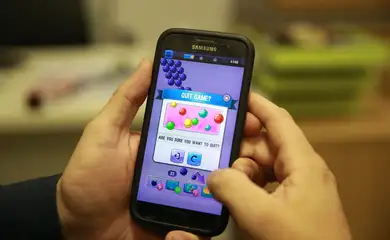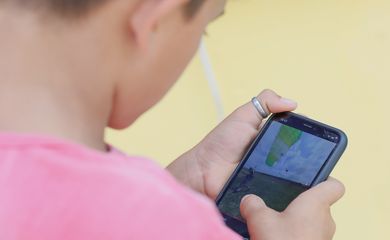Internet use among kids aged 6–8 has doubled in the last decade

In the last ten years, internet use and cell-phone ownership have grown among Brazilian children up to the age of eight. The proportion of babies up to two years old using the internet jumped from nine percent in 2015 to 44 percent last year. Among those aged three to five, the leap was from 26 to 71 percent; and for the six-to-eight age group, usage doubled from 41 to 82 percent.

The data can be found in an unprecedented study by the Regional Center for Studies on the Development of the Information Society (Cetic.br), a department of the Brazilian Network Information Center (NIC.br), which was launched on Tuesday (Feb. 11), Safer Internet Day.
“These data need to be better investigated in the future so we can understand the different use types. We know it’s often watching shows or content; it’s not necessarily an active use of the internet. But this already shows that technology is present in the homes of this age group,” said Fábio Senne, general research coordinator at Cetic.br.
The proportion of kids owning their own cell phone rose from 2015 to 2024—from three to five percent in the zero-to-two age group, from six to 20 percent in the three-to-five age group and from 18 to 36 percent in the six-to-eight age group.
In the case of computers, however, the opposite has happened. In 2015, 26 percent of children aged three to five and 39 percent of those aged six to eight used one. By 2024, the proportions had fallen to 17 and 26 percent respectively.
Class
The study also shows that the use of digital technologies by children up to the age of eight varies according to economic conditions, and is lower among the poorest. Among kids from households in classes A and B, for instance, 45 percent of those aged zero to two, 90 percent of those aged three to five, and 97 percent of those aged six to eight were internet users in 2024. In class C, the percentages were 47, 77, and 88, respectively. Among D and E classes, the same indicators were 40, 60, and 69 percent.
The same holds true for differences in cell-phone ownership. In the zero-to-two age group, the proportion of kids who own a cell phone is 11 percent in classes A and B, while in classes D and E it stood at no more than four percent.
Considering the three-to-five age group, the proportion ranged from 26 (classes A and B) to 13 percent (D and E). In the age group of children aged six through eight, cell-phone ownership corresponds to 40 percent in classes A and B, 42 percent in class C, and 27 percent in classes D and E.
The pandemic
Both the use and possession of cell phones have intensified in this age group with the new coronavirus pandemic. “It’s interesting to note how the pandemic ended up bringing about a new level. There was growth over the whole period [of ten years], but the surge over the course of the pandemic ended up placing it at a higher level, with children from the age of three already owning their own device,” Senne noted.
As for device ownership, there was a big change during the pandemic. The numbers remained stable from 2015 to 2019, grew in 2021, and stabilized again at a higher rate until 2024. The most significant variations were seen in the three-to-five age group, which went from 12 percent in 2019 to 19 percent in 2021; and in the six-to-eight age group, which rose from 22 to 33 percent in 2021 over the same time span.
“Cell phones have become everyday devices for children and teenagers, especially during that period of restriction. And internet access continued to grow rather strongly after the pandemic,” the director added.
The only decrease observed after the pandemic, Senne went on, was linked to computers—including desktop computers, tablets, and laptops.





